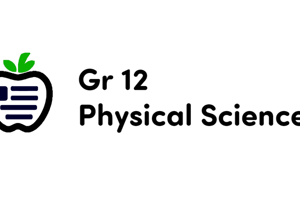Podcast
Questions and Answers
What determines the major product in an electrophilic addition reaction to an unsymmetrical alkene?
What determines the major product in an electrophilic addition reaction to an unsymmetrical alkene?
- The concentration of the electrophile
- The size of the alkene molecule
- The stability of the carbocation intermediate (correct)
- The temperature of the reaction
During electrophilic addition, where does a small molecule get added?
During electrophilic addition, where does a small molecule get added?
- To an area of low electron density
- To the methyl group of the alkene
- To the center of the molecule
- To an area of high electron density (correct)
What is the order of stability for carbocation intermediates?
What is the order of stability for carbocation intermediates?
- Tertiary > secondary > primary > methyl (correct)
- Secondary > primary > methyl > tertiary
- Primary > tertiary > secondary > methyl
- Methyl > primary > secondary > tertiary
In an electrophilic addition reaction, what does the alkene induce in a non-polar molecule?
In an electrophilic addition reaction, what does the alkene induce in a non-polar molecule?
What is the general principle behind Markovnikov's rule in electrophilic addition reactions?
What is the general principle behind Markovnikov's rule in electrophilic addition reactions?
Which type of alkyl group substitution makes a carbocation intermediate more stable?
Which type of alkyl group substitution makes a carbocation intermediate more stable?
What role does the electron density play when reacting with HBr in an electrophilic addition reaction to alkenes?
What role does the electron density play when reacting with HBr in an electrophilic addition reaction to alkenes?
What is unique about electrophilic addition reactions compared to other types of reactions?
What is unique about electrophilic addition reactions compared to other types of reactions?
Why does no molecule get eliminated in an electrophilic addition reaction?
Why does no molecule get eliminated in an electrophilic addition reaction?
What happens to the stability of a carbocation intermediate as you move from tertiary to primary substitution?
What happens to the stability of a carbocation intermediate as you move from tertiary to primary substitution?
Flashcards are hidden until you start studying
Study Notes
Elimination Reactions
- Elimination from alcohols involves making a good leaving group using an acid catalyst, where the oxygen atom acts as a base (H+ acceptor).
- In an elimination reaction, OH- acts as a base, not a nucleophile, and takes place in an alcoholic (e.g. ethanol) solution, not in aqueous (water) solution.
- Elimination from asymmetrical haloalkanes gives three possible products.
- The conditions for elimination vs substitution reactions are:
- Type of haloalkane: mainly secondary and tertiary for elimination, and mainly primary and secondary for substitution.
- Solvent: alcohol (e.g. ethanol) for elimination, and water for substitution.
- Concentration of OH-: high concentration for elimination, and low concentration for substitution.
- Temperature: high temperature for elimination, and low temperature for substitution.
Mechanism of Elimination Reactions
- E2 mechanism for haloalkanes: HOδ+ + H2 O + X- δ-
- E2 mechanism for alcohols: H+ - H+ + H2 O
Nucleophilic Addition Reactions
- A nucleophile is added to the molecule, and no other molecule is eliminated.
- Takes place with aldehydes and ketones, where a nucleophile (e.g. cyanide ion, CN-) adds across the C=O double bond to increase the length of the carbon chain.
- Mechanism: Electrophile H+ δδ+ -CN Nucleophile
- Nucleophile attacks the bond, which breaks, and oxygen picks up H+ from the solvent.
Electrophilic Addition Reactions
- A small molecule is added to an area of high electron density, and no molecule is eliminated.
- Occurs in alkenes and alkynes, where X = H or Halogen (e.g. F / Cl / Br / I) and X’ = Halogen (e.g. F / Cl / Br / I).
- δδ+ X’- δ- is the general mechanism.
- Addition to unsymmetrical alkenes can produce two possible products.
- Markovnikov's Rule: the most stable carbocation intermediate is the one with the most alkyl groups substituted, and the reaction mechanism will tend to proceed via the most stable intermediate.
Studying That Suits You
Use AI to generate personalized quizzes and flashcards to suit your learning preferences.




